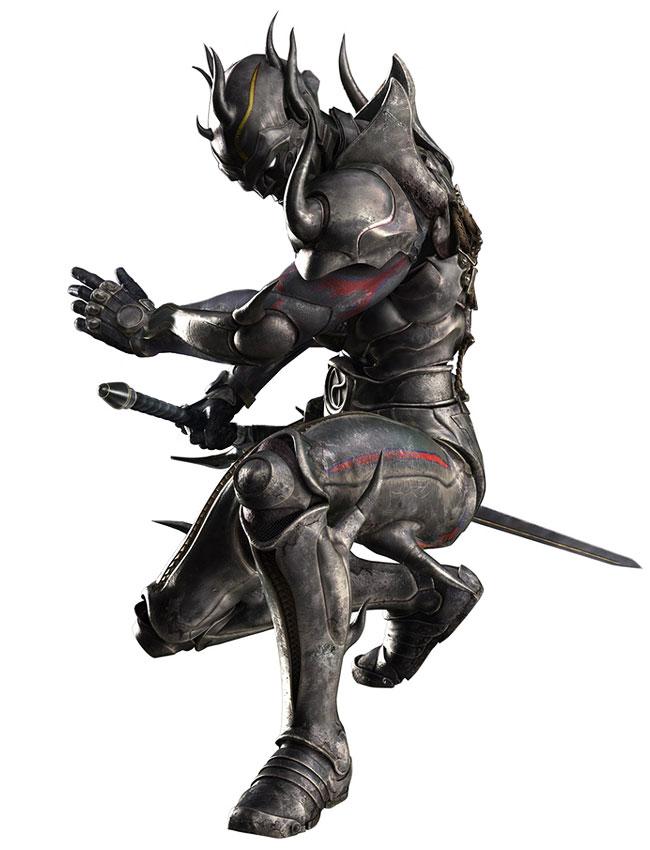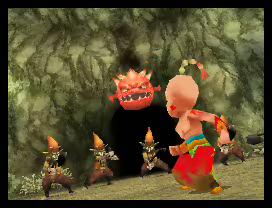
Infinite Space Review
Platinum Games have had a very good couple of years with hardcore gamers. Since being formed from the ashes of Clover they’ve partnered with Sega to put out the hugely successful Bayonetta on 360 and PS3 and the critically successful MadWorld which failed to light up the Wii sales charts, and now they’re trying their hand at DS development with sci-fi RPG Infinite Space.
Being a Japanese RPG, Infinite Space goes some way to embrace the traditions of both the JRPG and Sci-Fi genres, merging the two into a traditional story about young man Yuri who dreams of leaving his home colony and flying amongst the stars – and as the name of the game might suggest, he succeeds.
Yuri will eventually take on the role of the captain of his own ship, and through him you’ll be able to recruit a massive number of crewmembers throughout the game as well as upgrade and change your ship.
While Infinite Space mixes combat both on-and-off ship the real focus of the game is on the ships themselves, and the better part of the in-game combat is actually on those battles that take place out in the deep reaches of space.
Yuri will start out with a single ship, but as you progress through the game he’ll gain access to command a mini-fleet of five. You’ll be challenged with building a balanced team of ships suitable for any combat situation, and the ships themselves fit into the archetypes one would expect from both science fiction and RPGs, with certain classes of ships slotting into support roles whilst others are the heavy, hulking and formidable tank in battles.

It’s all about customization, and every ship in Infinite Space can be kitted out with various load-outs of rooms, weapons and features that will all have considerable benefits in combat. It’s impossible, of course, to slap every single upgrade on your ship, so picking and choosing exactly what to put on each ship will have a massive effect on how that space combat plays out.
The upgrades are called modules, and modules can do anything from improve health and attack power to speed up the movement of ships. It’s all a sci-fi nerd’s dream, where all the parts do the job you’d expect from the name and it allows you to live out those space-captain fantasies where you build the perfect space faring vessel. It’s not all big engines and lasers, though, as modules such as the cafeteria will be required to keep the morale of the ship’s crew up.
Managing the crew actually plays as large a role as managing the ships themselves, as you’ll have to staff each ship’s rooms with people skilled in those jobs. You’ll need a first mate, someone to juggle finances and yes, and somebody to staff that cafeteria and cook the meals. If that person isn’t a good cook the cafeteria will have a lesser effect on crew morale, so it’s important to choose wisely.
With a massive galaxy to explore, combat is usually initiated as you’re speeding across the stars from one planet to another, with sci-fi’s ever-present space pirates out to strip your ships of their riches. Once in combat, you’ll have to wait for a meter to charge up before you can execute a manoeuvre.
The moves are split into three groups; attacks, barrages and dodges. Attacks fire all the weapons currently available, barrages cost double the command meter but are more powerful and the dodge does exactly what it says on the tin, dodging incoming attacks. This sounds like a simplistic rock-paper-scissors combat setup, and that’s because it largely is.
As well as the simple command setup, you’ll also have to juggle the range of your ship. Certain weapons will only fire so far, so you’ll have to get in close if you want them to work – but doing so leaves you at more risk of getting hit by more powerful weapons yourself. You can also order smaller fighter ships to take off to harass enemies and stop them from moving, and these elements together add a welcome layer of complexity to combat.

While the commands themselves are different, Infinite Space spices up its combat by having you think about distance and weapon range constantly and by also placing an enormous emphasis on preparing the right battle load-out on your ships before heading into combat.
The difficulty level can sometimes feel bumpy, with some battles pummelling you into the ground with relentless difficulty and others offering up pathetically weak gangs of pirates, but overall the game provides a decent, enjoyable challenge that’ll saw me obsessively tweaking your ship designs to get the optimum setup for hours on end.
If all else fails you can get up close and board ships, but the on-foot combat is simply the three commands without the interesting aspect of range, and so is rather boring – this seems to be a glaring oversight and a missed opportunity for an on-foot battle system as interesting as the in-space one.
As a sci-fi nerd, there’s something incredibly satisfying about Infinite Space’s over-complicated, indulgent customization. It’s relatively easy to use once you get the hang of it, but there’s such a plethora of options and parts available that it’s pleasingly extreme. As I said above, I spent hours tweaking the layout of ships and building all-new ones without much boredom.
The issue here is that while it’s fine once you get the hang of it, Infinite Space does commit the rather nasty sin of failing to explain any of its complex systems properly. While explanations of what various ship modules do and what obscurely-named character statistics mean can be found deep within the game’s built in help system, it feels overly draconian that in this day and age to be forced to go searching for an explanation.
Infinite Space suffers overall from a difficult teething phase where the first few hours can foster frustration thanks to a lack of sufficient explanation and a sharp difficulty curve, but that curve soon levels out and the game systems are incredibly fun once you’ve learned them.

The game sports some decent-looking graphics, and has some great-looking anime character portraits and extremely detailed-looking ship and module designs that are sure to make any sci-fi fan grin, though the actual rendering in battle leaves a bit to be desired. Cutscenes progress through text and character portraits on-screen, and overall Infinite Space looks just fine but it certainly won’t win any awards for its visual presentation – gameplay is king here.
No More Heroes composer Masafumi Takada is on board for the soundtrack, providing exactly the kind of sound you’d expect from an epic space opera, with the overall sound-design following suit with all the lasers, explosions and ship engines you’d expect present and correct.
Infinite Space definitely has some significant issues – it’s lacking in presentation with basic graphics and there are some major oversights in terms of just how the game is built, with some systems plain-out not clear enough for players just starting out with the game, but the extremely clever and fun combat design and customization go an awful long way to make you overlook those problems.
Weighing in at fifty to eighty hours, Infinite Space features an awful lot of content for a portable title, and just might be the perfect portable title for an RPG fan – it’s familiar yet different, clever, fun and it’ll last you an age.